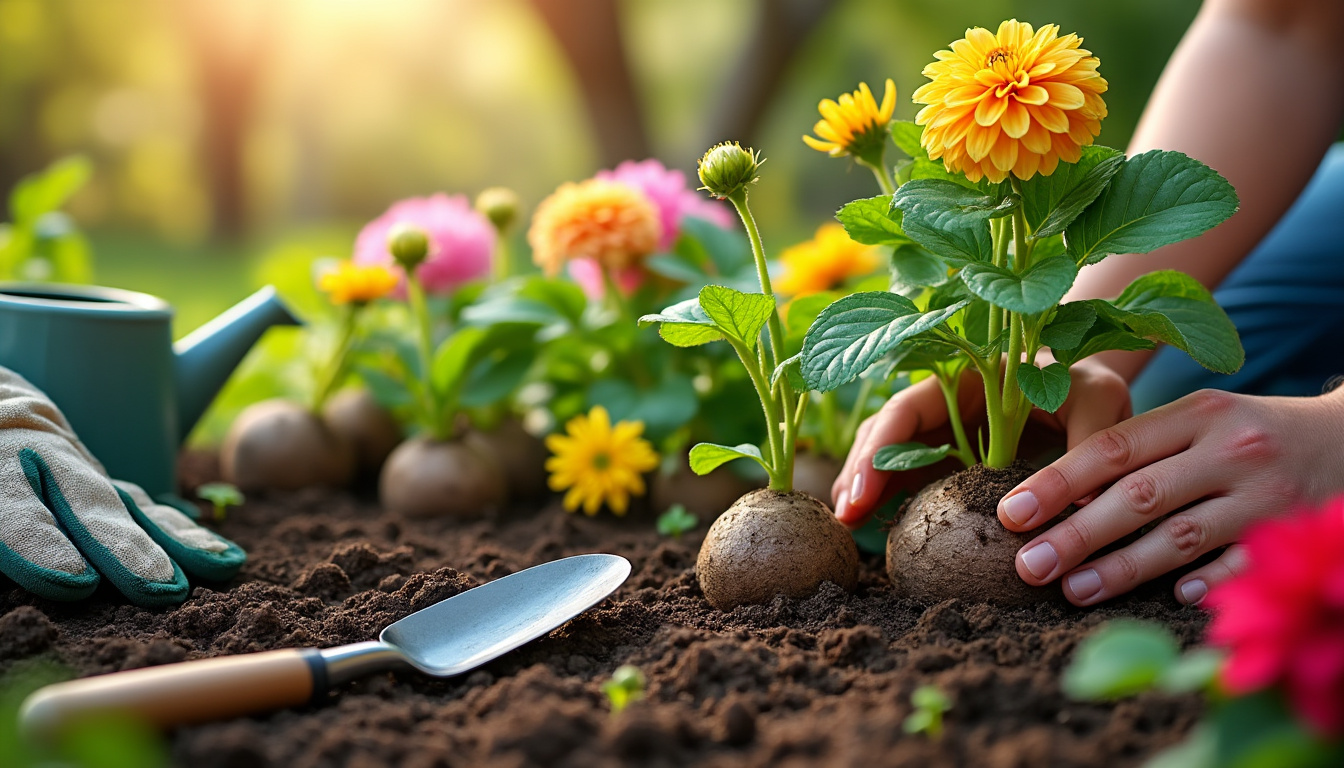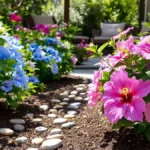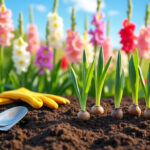If you’re looking to elevate your garden with a splash of color and vibrancy, consider the dahlia—an enchanting flower that has delighted gardeners for centuries. From their fascinating history to their easy cultivation, dahlias can transform any space into an oasis. This guide aims to thoroughly navigate the essential aspects of planting and caring for dahlia tubers, equipping you with the knowledge for a flourishing display of blooms.
- Understanding the dahlia’s journey
- Choosing the right planting time
- Effective planting techniques
- Essential care practices
- Cutting and storing for future blooms
- Managing pests and diseases
The Fascinating Journey of Dahlias
Dahlia flowers, with their rich array of colors and intriguing shapes, have captivated gardeners in Oregon and around the globe. Historically linked to the Aztec civilization, these flowers were initially cultivated for their edible tubers and medicinal qualities, not their aesthetic appeal. When Spanish settlers transported them to Europe in the 18th century, dahlias found their calling as ornamental plants, leading to the cultivation of 42 species and over 57,000 cultivars today.
Dahlias thrive in diverse environments, whether planted in garden beds or containers. Not only do they provide stunning visual effects, but they also draw in pollinators such as bees and butterflies—particularly the white and yellow varieties for bees, while butterflies are drawn to reds and purples.
Optimal Timing for Planting Dahlia Tubers
Planning your dahlia tubers’ planting time is crucial, especially as they cannot tolerate frost. Ideal planting typically occurs in late spring, when soil temperatures reach at least 60°F (around late April or May). If you’re in zones 7 and above, you may get an earlier start, while cooler zones may require a later approach.
When is the Right Time?
| USDA Hardiness Zone | Recommended Planting Period |
|---|---|
| Zones 7 and above | Mid-April to early May |
| Zones 6 and below | May to early June |
In 2025, keep an eye on local weather forecasts to make informed planting decisions. This ensures that you provide the optimal conditions for your dahlias to flourish.
Effective Dahlia Planting Techniques
Begin by selecting a well-drained, sunny location in your garden where dahlias can bask in at least six hours of sunlight daily. Prepare your soil to be loose and fertile, complementing it with organic matter like compost for enhanced drainage and nutrient content.
Steps for Planting Dahlia Tubers
- Dig a hole approximately 4 to 6 inches deep.
- Place the tuber with the “eye” facing upward, ensuring proper spacing of around 2 feet for growth.
- Cover the tuber with soil and gently pat it down.
- Water lightly; avoid overwatering until the first true leaves appear.
If space is limited, consider potting your dahlias in containers that are at least 12 to 18 inches in depth. This helps manage their growth and promotes a beautiful display.
Caring for Your Dahlias for Maximum Growth
As your dahlias grow, ensure that you monitor their care closely. Fertilizing with a low-nitrogen formula like 5-10-10 can provide essential nutrients without promoting excessive foliage at the expense of blooms.
| Fertilizer Type | Application Timing | Notes |
|---|---|---|
| Slow-release (5-10-10) | 30 days after planting | Encourages healthy blooms, avoids excessive foliage growth |
| Granular | 3-4 week intervals | Keep off the foliage; water after application |
Watering and Mulching
Watering is vital, particularly at the root level. If the soil is sandy, plan to water frequently, while clay soil may require amendments for drainage. Use mulch to help retain soil moisture and regulate temperature.
Staking and Support
As they grow tall, dahlias often need staking to support their weight. Secure the plants with soft twine to prevent breakage and ensure they can support their beautiful blooms.
Harvesting and Storing Dahlias
For those looking to enjoy their dahlias well into the fall, know that cutting flowers at the right time—preferably in the cool of the morning—will result in longer-lasting arrangements.
Storage and Division Techniques
After bloom season, you can dig and divide your dahlias tubers for propagation. This is typically done in the fall or spring, taking care to keep tubers dry and protected from frost.
When is beetroot ready to harvest for the perfect taste?
Managing Pests and Diseases
Dedicated care goes beyond watering and feeding; it’s essential to keep an eye out for common pests such as aphids or cucumber beetles. In cases of infection, swift action is necessary to protect your plants.
| Pest/Disease | Control Method |
|---|---|
| Aphids | Insecticidal soap spray |
| Powdery Mildew | Improve airflow; remove infected leaves |
FAQs About Planting Dahlias
How deep should I plant dahlia tubers? Aim to plant dahlias about 4-6 inches deep to facilitate healthy sprouting.
Can I grow dahlias in containers? Yes! Opt for low-growing or dwarf varieties in pots at least 12 to 18 inches wide.
Do dahlias require a lot of water? They prefer consistently moist soil but don’t like soggy conditions. Monitor closely!
What type of fertilizer is best for dahlias? Use low-nitrogen fertilizers like 5-10-10 for optimal blooming.
When is the best time to cut dahlias for arrangements? Early morning, when blooms are still refreshed from overnight moisture, is best!
















